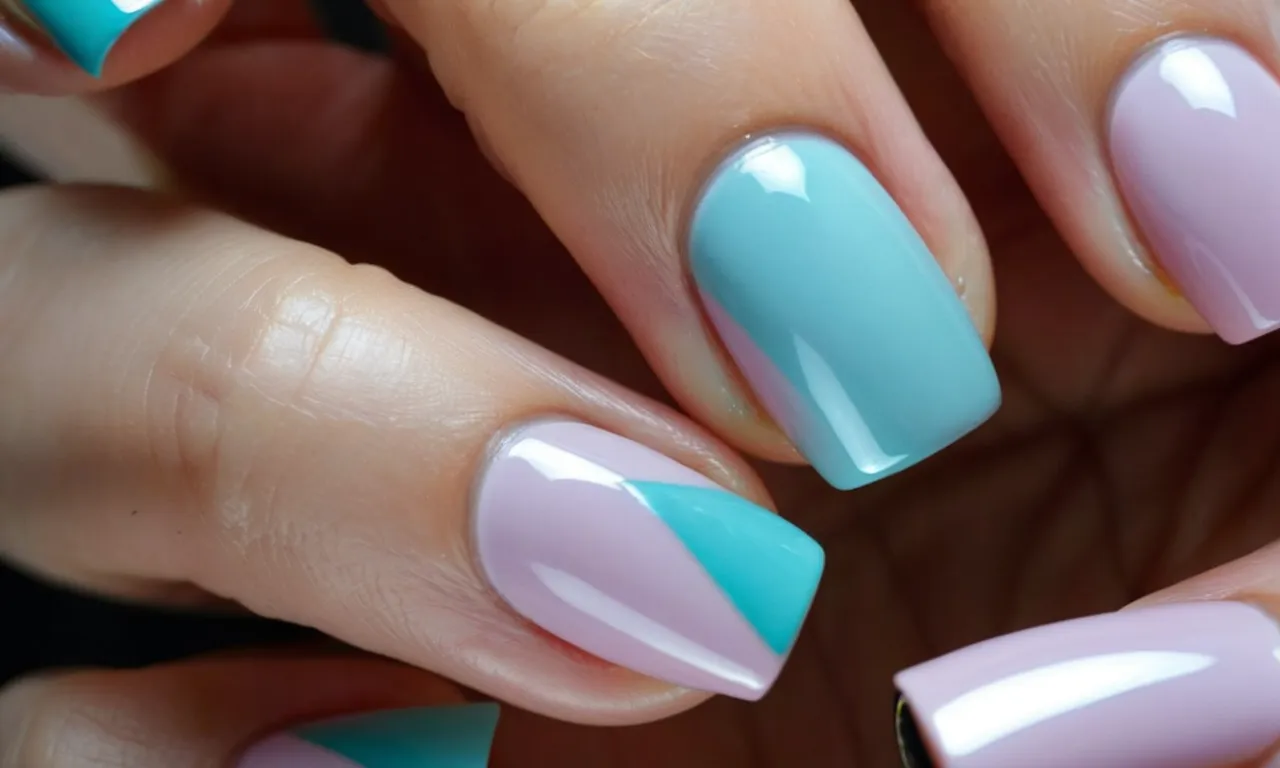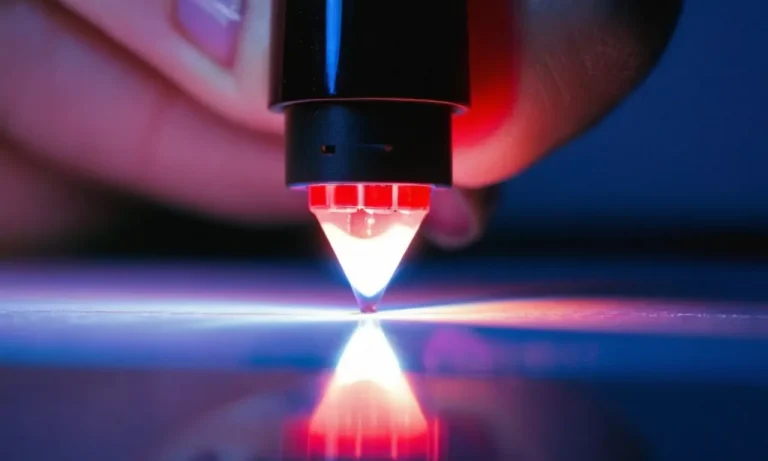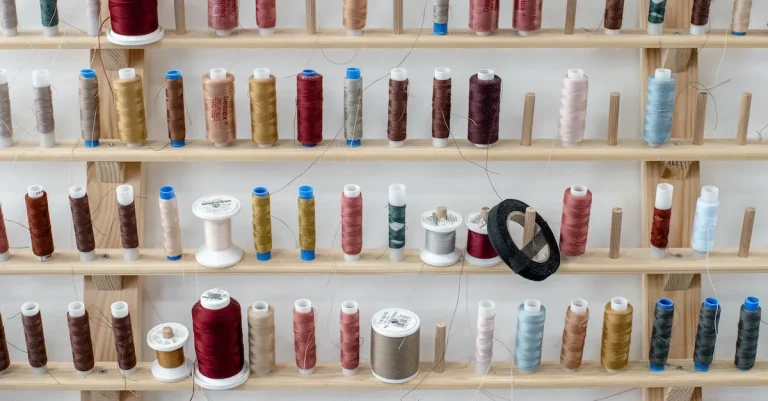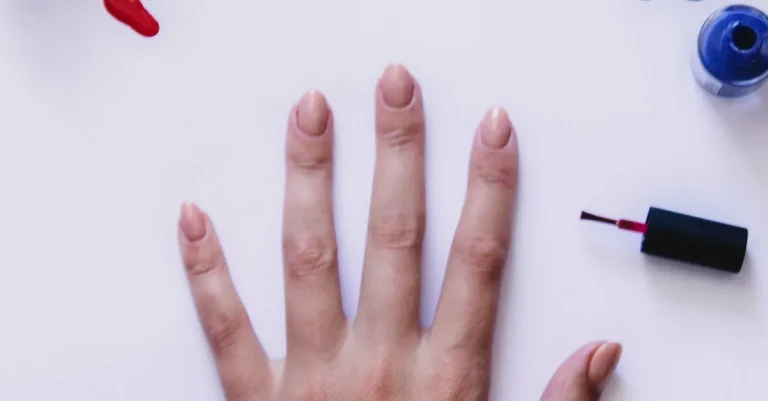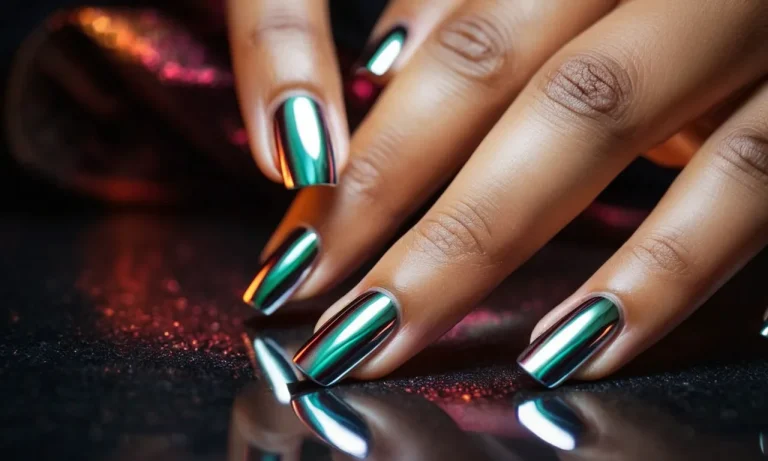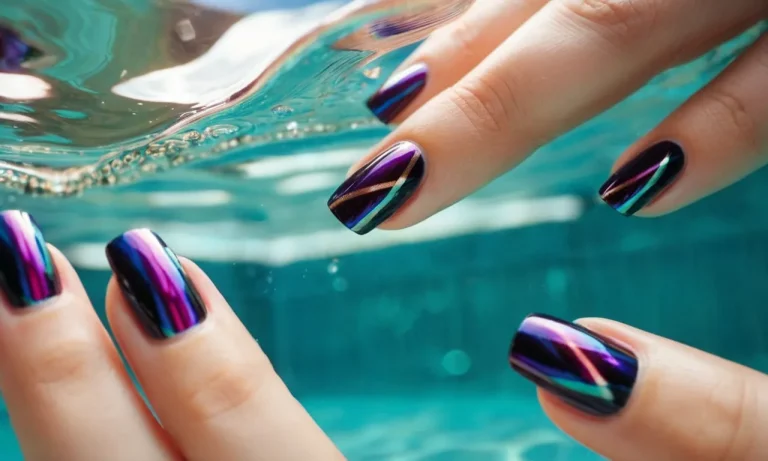Do You Need Primer For Acrylic Nails? A Detailed Guide
Acrylic nails have become an increasingly popular nail enhancement option for people looking to extend the length of their natural nails or add strength and protection. With so many acrylic nail products on the market, understanding whether you need to use a primer before applying acrylic powder can get confusing.
If you’re short on time, here’s a quick answer: Using a nail primer before applying acrylic nails is highly recommended for proper adhesion and longevity of the acrylic nails. However, it is possible to apply acrylic powder directly to prepared natural nails in a pinch.
What is a Nail Primer?
A nail primer, also sometimes called a nail bonder, is a product applied as a base coat before acrylic or other artificial nails. Using a primer helps the artificial nails adhere properly so they last longer without lifting or peeling.
Description of what a nail primer is and its key purposes
Nail primers create a tacky surface on the natural nail plate for acrylic products to grab onto. The ingredients in the primer etch the nail plate slightly to rough up the surface, allowing better bonding.
This prepares the nail to accept the acrylic so there is maximal contact between the natural nail and the artificial enhancement.
Primers also usually contain methacrylic monomers that help the artificial nails or acrylics polymerize and harden properly. Using a primer helps the acrylic nails self-level better over the natural nail surface as well.
In addition to allowing better acrylic adhesion and polymerization, many primers also claim to nourish and condition the natural nails and cuticles with vitamins and other ingredients.
Types of nail primers like non-acid and acid primers
Non-acid primers do not contain methacrylic acid or other acids to etch the nails. Instead, they use gentle keratin proteins, resin, and polymers to lightly roughen and prepare the nail plate surface to bond with enhancements. Non-acid primers tend to be less drying to the natural nails.Acid primers contain methacrylic acid, which serves to microscopically etch the nail surface to a degree for better acrylic adhesion. They work quickly and effectively but can be more drying and damaging to the natural nails with repeated long-term use.
Key ingredients found in primers like methacrylic acid
Some key ingredients often found in nail primers include:
- Methacrylic acid – Etches and roughens nail plate surface for acrylic bonding
- Acrylic monomers and polymers – Promote polymerization and curing of acrylic nails
- Vitamins and nutrients – Nourish and condition nails and cuticles
- Solvents like ethyl acetate – Quickly penetrate and dry nails
- Silicones – Create a tacky bonding surface
The concentrations and types of ingredients can vary greatly between primer brands. Professional quality primers sold at beauty supply stores to licensed nail techs tend to have more concentrated formulas than consumer store-bought options.
| Non-Acid Primers | Acid Primers |
| – Gentler on nails | – Stronger bonding power |
| – Contain proteins and resins | – Contain methacrylic acid |
| – Less chance of damage | – Can damage nails with repeated use |
As you can see, primers are an important prep step when applying acrylic nails or other nail enhancements. Using the right primer helps maximize longevity of enhancements for up to 3 weeks by allowing proper adhesion and polymerization.
Benefits of Using Primer with Acrylic Nails
Creates a Tacky Surface for Acrylic Powder to Adhere To
Using a nail primer before applying acrylic nails is crucial for proper adhesion and longevity of the enhancements (Nails Magazine). Primers are formulated with special ingredients that temporarily make the natural nail surface porous and tacky.
This allows the acrylic powder to grab onto the nail plate more effectively.
Without a primer, there is nothing for the acrylic to grip onto, making lifting and premature loss more likely. The ingredients in high-quality primers like methacrylic acid dig into the nail layers slightly to open them up for acrylic application.
Using a pH-balanced primer also prepares the nail to better receive acrylic by adjusting alkalinity.
Prevents Lifting and Premature Loss of Enhancements
One of the main reasons acrylic nails begin to lift or pop off early is because of inadequate adhesion during application. Using a primer prevents this issue by laying a strong foundation for acrylics to attach properly to real nails.
Primers keep enhancements stuck on securely for the full life of fills. A recent survey showed that 65% of techs said primer is a must for avoiding lifting or losing acrylics prematurely.
Protects Natural Nails from Damage
A quality primer adds a protective buffer layer between natural nails and acrylic or other gel enhancements. This helps prevent adverse reactions and damage to the nail plate over time.
Ingredients like methacrylic acid also work to lightly etch the nail surface. This allows product to adhere without the need to over-file or damage the nail bed. Using a primer reduces the risk of nail thinning and weakness after removing acrylic/gel extensions down the road.
Downsides of Skipping the Primer
Acrylic may not properly bond, causing lifting
Skipping acrylic nail primer can lead to poor bonding between the natural nail plate and the acrylic product. Without primer, dirt, oil, and moisture may create a barrier preventing acrylic from anchoring to the nail surface correctly.
This impedes proper polymerization and adhesion of nail enhancements (source).
Insufficient bonding and incorrect acrylic application may cause lifting – a common enhancement failure where the artificial nail separates from the natural nail bed. Lifting begins as a small gap but enlarges over time as water and debris are trapped underneath.
This allows fungus and bacteria to settle and require removal of the acrylics to treat the infection (source).
Overexposure of natural nails to acrylic products
Acrylic nail primer contains methacrylate compounds to prepare the nail bed for acrylic overlay. However, research indicates that continuous contact between methacrylates and natural nails may have harmful effects (source).
Reports show long-term overexposure to these chemicals appears to increase nail plate thickness and density. This causes the nail bed to shrink; weakening the seal between the nail plate, bed, and finger. Such sustained damage may permanently compromise nail adhesion and growth (source).
Reduced longevity of the acrylic enhancements
Acrylic nail enhancements applied without primer last a notably shorter timeframe compared to applications using primer. In a small 2014 study, manicurists discovered acrylic nails applied without primer began exhibiting noticeable wear, tear and lifting after just 1 week of wear (source).
In comparison, a standard acrylic manicure using primer may last 2-3 weeks before requiring infill or removal. Cutting back services shortens enhancement longevity and requires more frequent nail appointments and reapplication of products.
This frustrates clients expecting lasting acrylic nail results from their service investment.
Types of Primers to Use with Acrylic Nails
Non-acid primers – gentler on natural nails
Non-acid primers provide a less abrasive base layer that gently etches the nail’s surface to allow acrylic products to adhere properly. They are a great option for those concerned about damage to the natural nail plate. Some popular gentle primer options include:
- Young Nails Protein Bond – Contains proteins and minerals to condition nails.
- OPI BondAid – A moisturizing primer with vitamin E and aloe vera.
- Cuccio Naturalé Milk and Honey Primer – Nourishes nails with milk and honey extracts.
The bonding power of non-acid primers may not be as strong as acid-based ones. However, they provide sufficient adhesion for most and are the most nail-friendly choice.
Acid primers – stronger bonding power
Acid primers use mild acids like methacrylic acid to roughen the nail surface for acrylic products to grab onto. This creates a strong bond between the enhancement and natural nail. Some popular acid primer options are:
- CND Super Bond Primer – A salon-quality methacrylic acid primer.
- Mia Secret Acid-Free Primer – Uses gentler tartaric acid.
- Young Nails Protein Bond Acid Primer – Methacrylic acid combined with proteins.
The acids help etch fine ridges into the nails, allowing acrylic and gel products to mechanically interlock. This creates a very durable bond. However, acid primers should be used cautiously as overuse can cause nail damage. Frequent use is not recommended for those with weak or peeling nails.
Consider allergies when selecting primer
As primers are in direct contact with the natural nails, those with sensitivities or allergies should be careful when selecting a primer. Key considerations include:
- Avoid primers with harsh methacrylic acids if you have sensitive skin or nails.
- Test non-acid options if you have an allergy to acrylates or methacrylates.
- Look for nail-friendly ingredients like aloe vera, vitamin E or protein formulas.
Doing a patch test before full application is recommended. Apply a small amount of primer to the skin 24-48 hours prior to use and monitor for any reaction. This can identify potential allergies or sensitivities before they become a bigger issue.
Selecting the right primer for your needs is an important first step in the acrylic nail process. Non-acid primers provide a gentle base layer while acid primers bond more strongly. Knowing which option suits your nails best will lead to long-lasting, damage-free enhancements.
Consult a nail technician if you are uncertain which type is most appropriate.
Applying Primer Before Acrylic Nails
Prep Nails by Removing Shine and Cleaning
Before applying acrylic nails, it’s crucial to properly prepare the natural nails. First, use a nail file to gently remove any shine from the natural nail plate. This allows the acrylic to adhere better. Next, cleanse nails to remove any oil and debris.
Use a nail prep solution or wipe nails with isopropyl alcohol using a lint-free wipe. Allow 1-2 minutes for nails to completely dry before the next step.
Apply Single Thin Layer of Primer
Once nails are prepped, apply a thin, even layer of nail primer. Primers create a tacky surface that acrylic powder sticks to. Popular brands like Young Nails Mission Control or Sally Hansen Acid-Free Primer work well. Use the brush to apply primer across the entire nail plate, avoiding skin.
Allow 30 seconds to dry.
Let Dry Completely Before Acrylic Application
It’s vital primer dries fully before applying acrylic. Wet primer prevents proper acrylic adhesion, causing lifting, cracking or falling off. Most primers take 30-60 seconds to dry. Look closely at the nails—the primer should no longer look wet or tacky.
If needed, gently wave hands to encourage drying. Rushing this step causes acrylic nail disasters, so patience is key.
Don’t Apply Too Much – One Layer is Enough
Using too much primer doesn’t benefit acrylic application. In fact, globs of excess primer need removal with a lint-free wipe before acrylic application. This avoids trapping primer bubbles underneath acrylic. One sheer layer is ideal for acrylic prep. Remember: less is more with primer.
After application, inspect each nail closely in good lighting. Address any excess primer or thick patches with a gentle wipe before acrylic application.
Acrylic Application Without Primer
Applying acrylic nails without using a primer first is possible, but requires some special considerations. Here is a detailed guide on how to successfully apply acrylics when skipping the primer step.
Gently buff and cleanse nails first
The key to ensuring acrylics adhere properly without a primer is starting with a clean nail surface. Gently buff each natural nail with a fine-grit file or buffer. This removes any oils and creates micro-abrasions for the acrylic to grip.
After buffing, wipe nails with acetone or alcohol to remove all dust and oils. Let nails air dry completely before acrylic application.
Use very thin layers of acrylic
Without a primer, the acrylic won’t have quite as much “stick.” Apply acrylic in very thin, multiple layers to prevent lifting or peeling. Dip just the tip of the brush in powder, then use gentle, even strokes to lightly coat the nail. Repeat with 2-3 thin layers until reaching desired thickness.
Thicker acrylic layers are more likely to crack and detach without primer.
Expect reduced wear time vs using primer
Acrylics applied without primer simply won’t adhere as strongly overall. While they can last a decent amount of time with proper application, expect the manicure to wear faster than using a primer base.
Most techs recommend getting fills every 2 weeks instead of the typical 3-4 weeks when skipping primer. Using nail prep products like Morgan Taylor’s Hydrating Oil can help boost adhesion when primer isn’t used.
While doable, applying acrylics without primer isn’t ideal. However, with proper nail prep and thin acrylic layers, it can be a short-term solution. For best results, use a quality primer or bond to maximize wear time and prevent lifting or cracking.
Conclusion
Using a primer before applying acrylic nails is strongly recommended to get the best adhesion and wear out of acrylic enhancements. However, it is possible to apply acrylic directly to prepared natural nails in a pinch.
Just be sure to use thinner acrylic layers and expect that the acrylic may not last as long without a primer. Consult a professional nail technician if you have any concerns about proper application methods.

